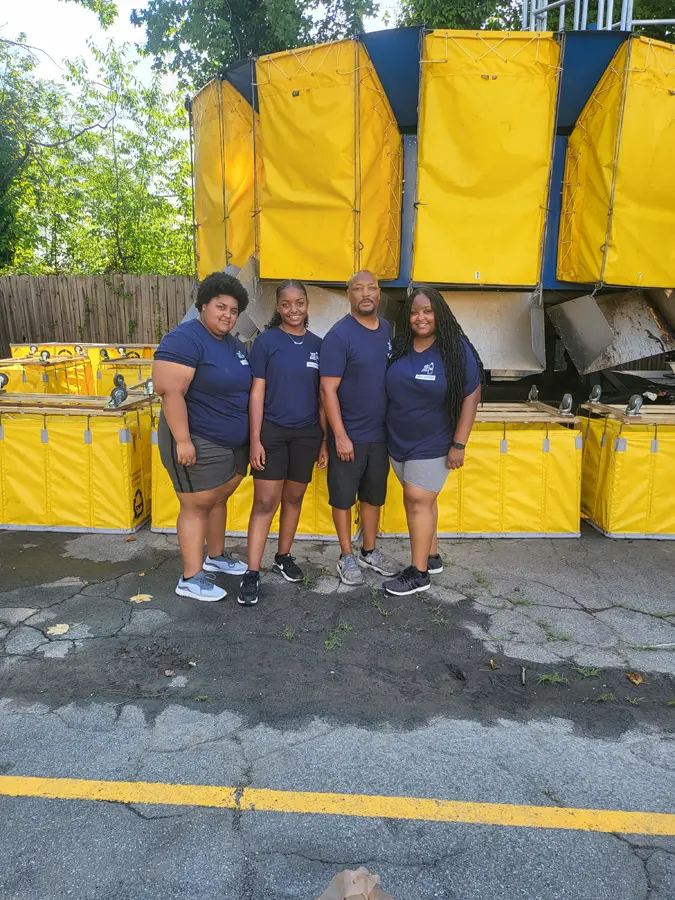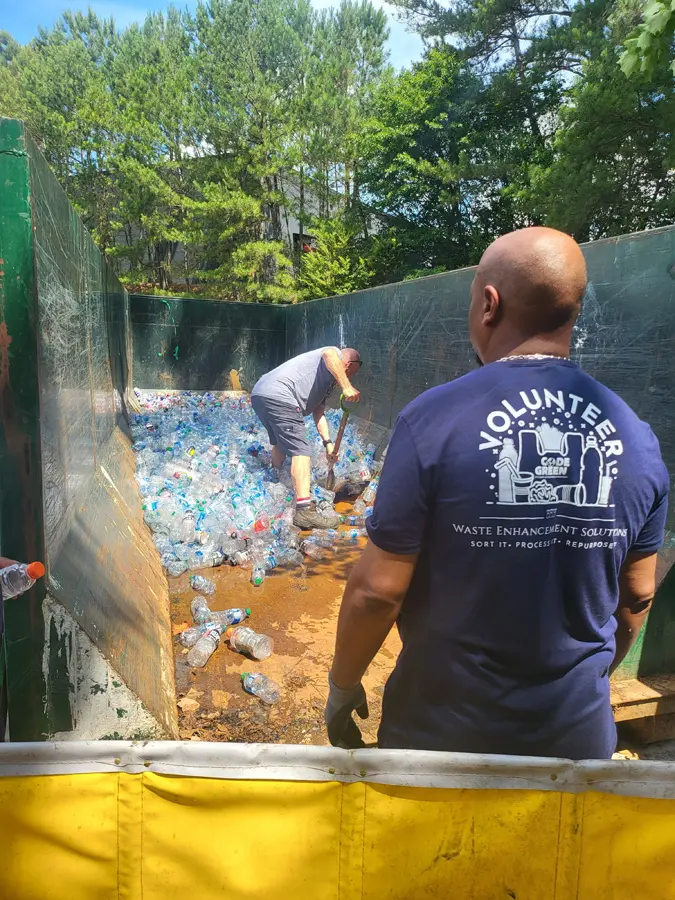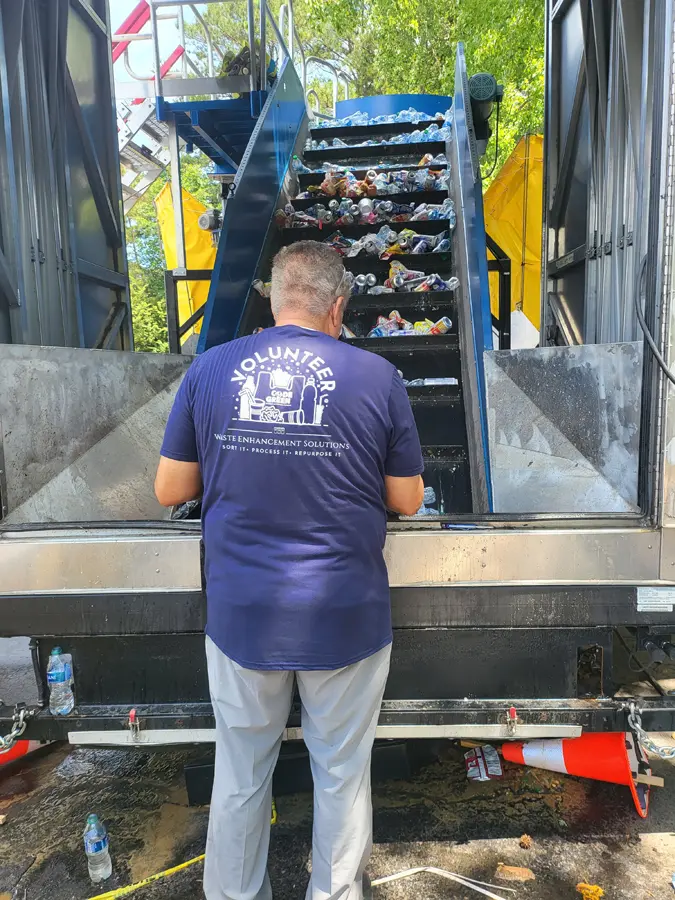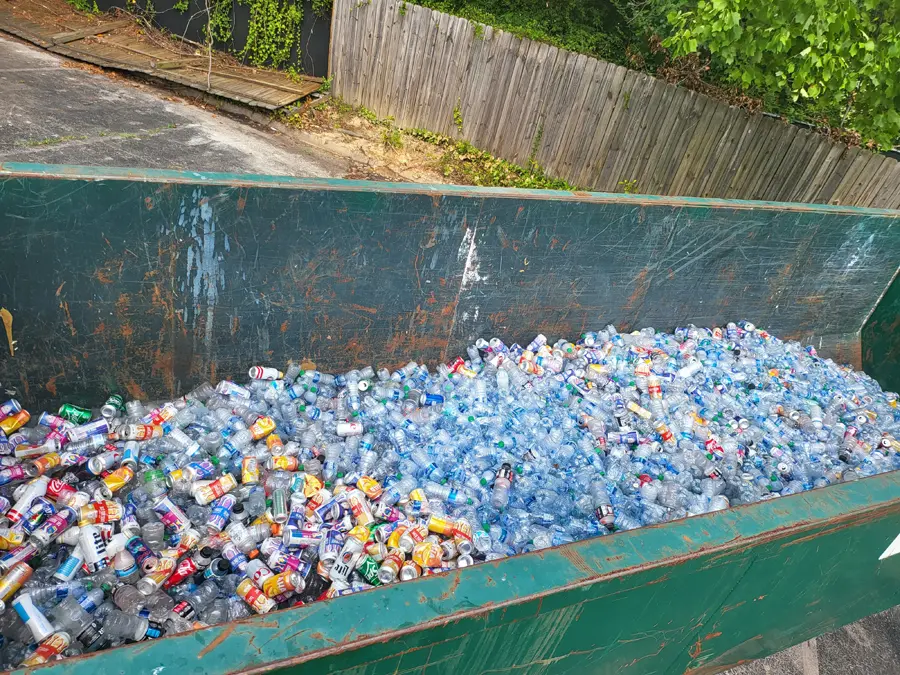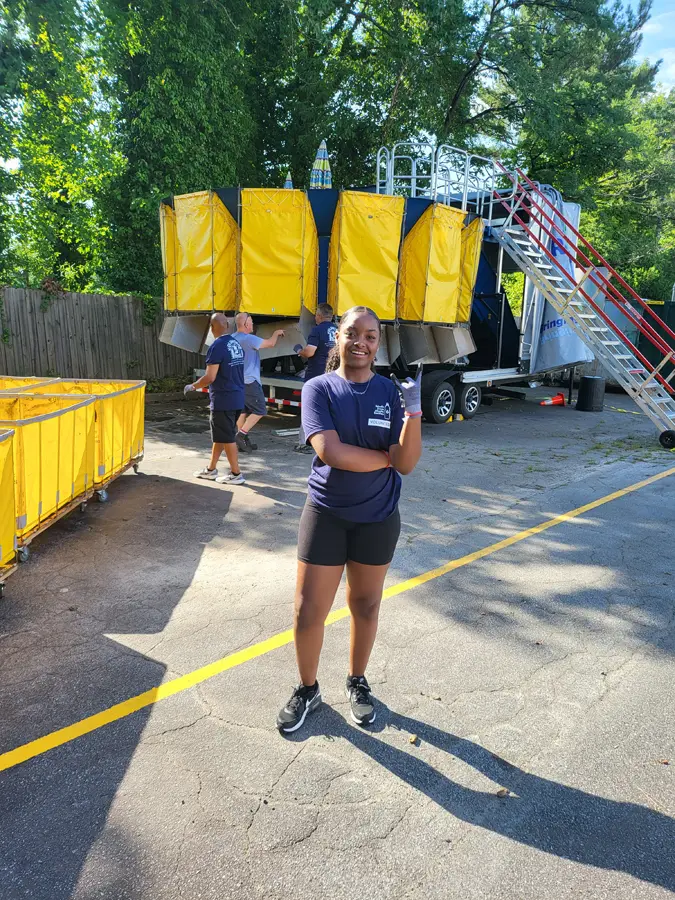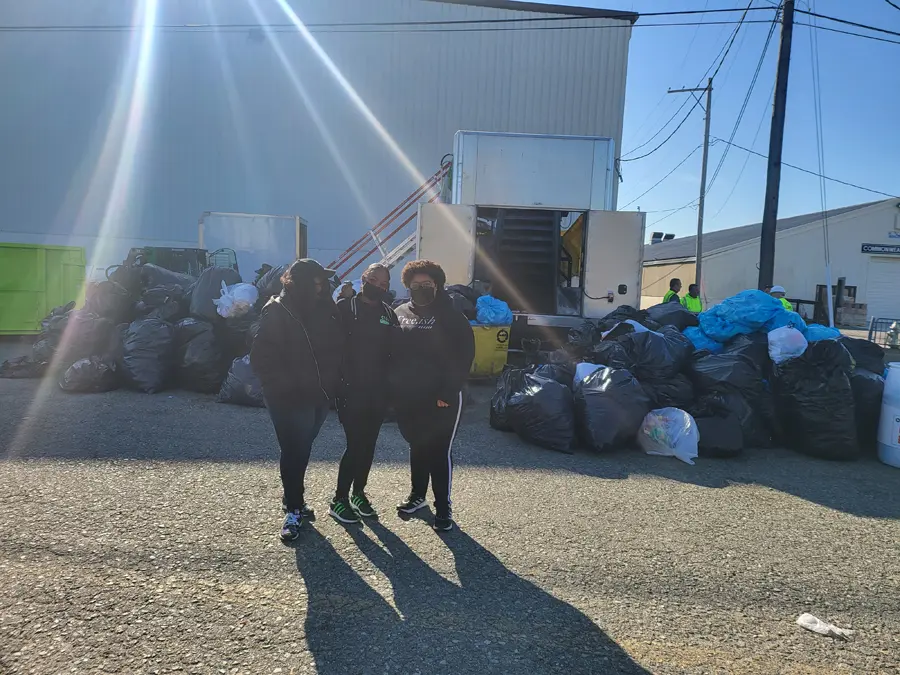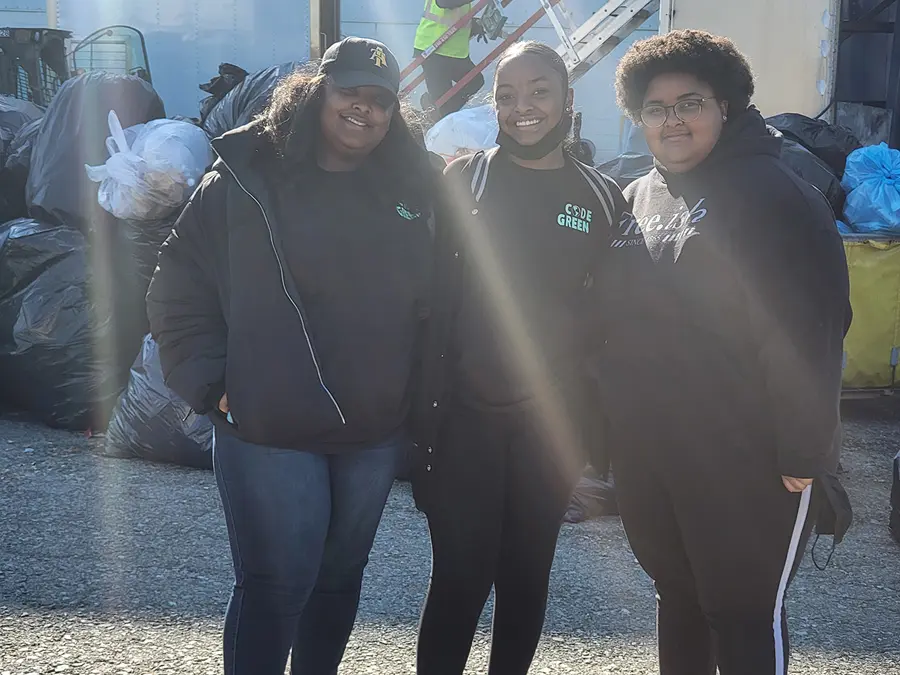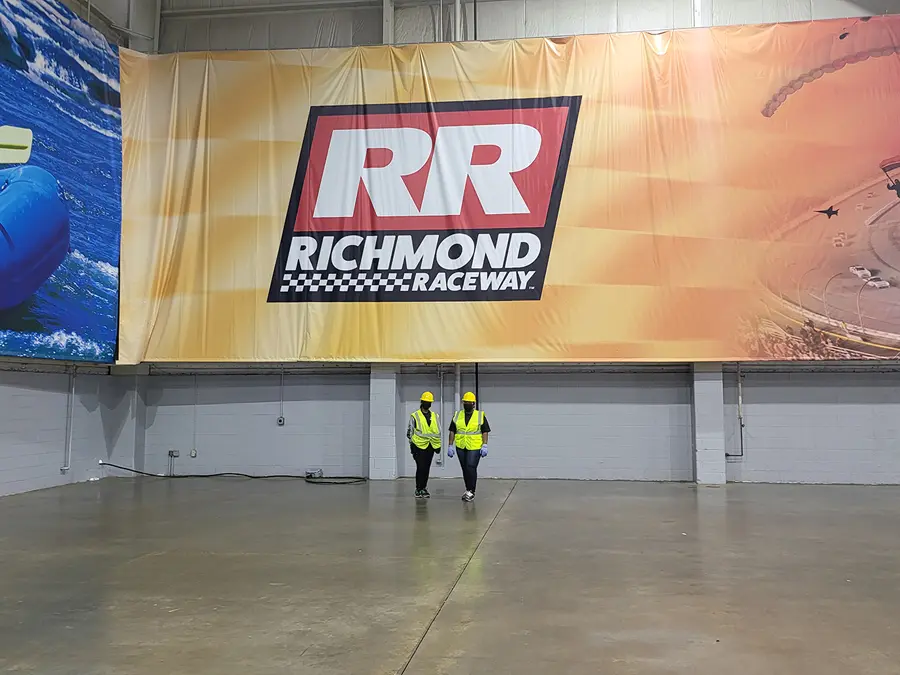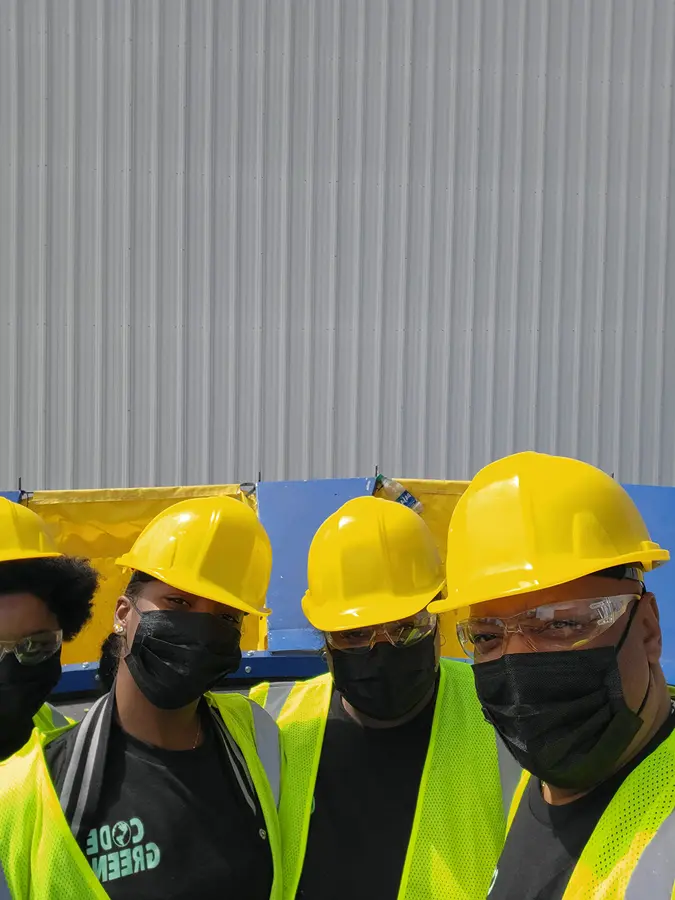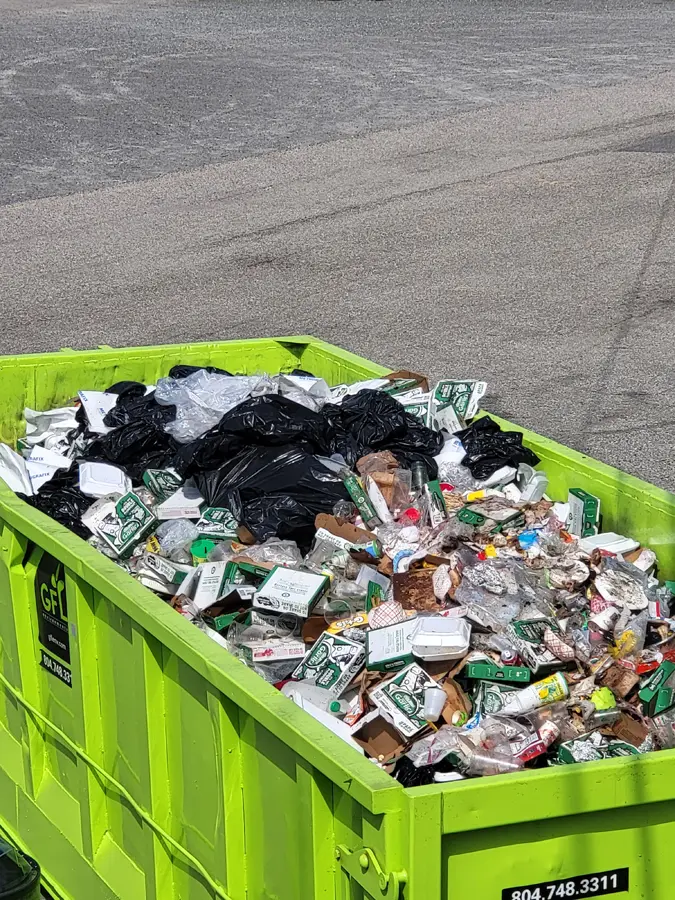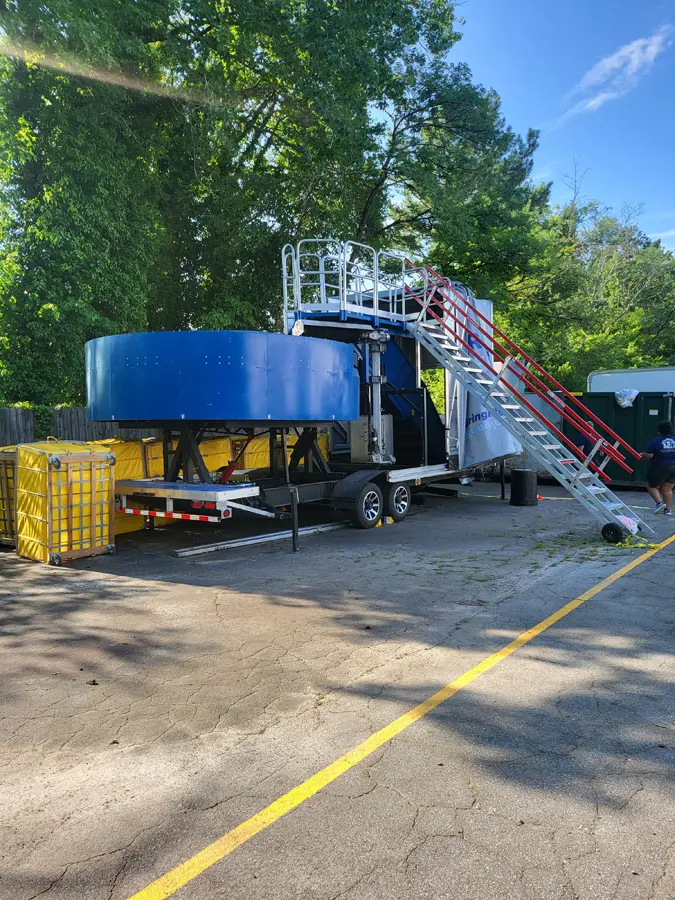Our Story
The Spark That Became A Mission
Before there was a company, there was a shared conviction: recycling should work better than it does. The proof was piled high in bags after big games, motorsports competitions, and concerts, bins brimming with good intentions and bad outcomes. In that mess, a future team found its calling.
One of us began in pharmacy, a profession grounded in precision and care. That early career taught him how small decisions ripple into big impacts on human well‑being. When he shifted into sustainability, he brought that same discipline to a new realm. He helped turn recovered plastic bottles into textiles, clothes people wore on college campuses and even at places like the Kennedy Space Center. It was tangible, visible circularity. But the more time he spent on the front lines of collection and recovery, the more one stubborn problem kept showing up: contamination at the bin.
Another of us is a builder at heart. Trained in architecture, he cut his teeth solving constraints through elegant design, equal parts creativity and engineering. To him, a recycling bin wasn’t a static container; it was a system, and systems can be redesigned. When conversations began about bridging the gap between human behavior and material recovery, he saw a blueprint waiting to be drawn, and redrawn.
A third brought the operational backbone. Passionate about translating big ideas into real outcomes for communities, she thrives where strategy meets street‑level reality. Sorting through post‑event waste at stadiums and speedways, she turned observations into a process: what can be fixed now, what needs a new model, and what data will prove the change.
Another teammate came up through design and digital, first pixels and print, then entire ecosystems of brand, UX/CX, SEO, and product. He had worked across industries and with global brands, launching campaigns and platforms that shape perception and guide action. His craft is storytelling that moves people, especially at the moments that matter.
Rounding out the go‑to‑market core is an educator who has spent a career turning complex truths into clear, credible narratives. Brand stories only stick when they’re honest and rigorous. She makes sure what we say mirrors what the data shows and what the field demands.
And then there is the steady hand on the tiller: a seasoned financial leader who has spent a lifetime as a calm, confident source of wisdom in business. A mentor to our sustainability lead from the earliest pharmacy days through the shift into circularity, he brings perspective that sharpens judgment; how to pace growth, structure partnerships, and invest in what endures.
Where Paths Crossed And Why They Stayed
These threads began intertwining long before the name Waste Wise Innovation existed.
- Apparel made from recovered plastics forged an early partnership between the sustainability lead and the digital strategist starting in 2016. They launched collegiate programs and specialty collaborations, practical proof that circular products could win hearts and wallets.
- The sustainability lead, the operator, and the educator rolled up their sleeves together, literally, sorting mountains of event waste after several large events in 2022. Aluminum cans crushed underfoot, bottles in the wrong bins, food tangled with recyclables. The pain points weren’t abstract; they had weight, odor, and cost.
- In an academic setting, the builder and the sustainability lead spent hours debating strategy and design, how to align ambition with feasibility, and how to use creative constraints to accelerate innovation throughout 2022 and 2023.
- Throughout, the financial mentor watched closely, quietly evaluating the team’s direction, stress‑testing assumptions, and offering guidance drawn from decades of experience. He helped translate passion into a plan, and a plan into a resilient business model.
Then came a pivotal conversation in 2023: a call between the creator, the builder, and the strategist to answer a single, deceptively simple question: how do you influence behavior at the exact moment someone stands over a bin? Ideas flowed. Patterns emerged. And one concept rose above the rest: retrofit technology at the bin that could actively reduce contamination, guide choices in real-time, and generate the data needed to improve the system week after week. With measured counsel from the financial leader, the team committed to an iterative build: move at a steady pace, learn faster, and invest where evidence points.
From Idea To Iteration
What followed was not a straight line. It was a disciplined sprint, then a recalibration, again and again. Prototype one proved the concept. Two and three wrestled with durability, power, and user cues in the chaos of high‑traffic venues. Four integrated smarter sensing and feedback loops. Five, now ready for a campus pilot, brought it all together in a retrofit form factor designed to meet facilities where they are, not where budgets wish they could be. At each stage, financial stewardship ensured the roadmap stayed focused, the supply chain stayed pragmatic, and the unit economics improved with every cycle. So many technological advances were made from the initial prototype in 2023 to the streamlined and efficient version being launched in 2025.
Along the way, the team realized that hardware alone wouldn’t solve the problem. Decisions require insight. Facilities managers, sustainability directors, and operations teams needed to see beyond “full/empty” and into what was actually being captured, when peaks occurred, where contamination spiked, and how interventions changed outcomes. So we built data tools alongside the device dashboards that translate bin‑level reality into actionable strategy, with metrics aligned to the outcomes that matter for both sustainability and operations.
What We Believe
- Progress is built in the field. We test in stadiums, student unions, and concourses, not just labs and slide decks.
- Design, data, and discipline are inseparable. The best product is the one that teaches us how to make the next one better, and the best company is the one built on sound fundamentals.
- People want to do the right thing. Clear cues and feedback at the bin transform good intentions into good outcomes.
- Circularity must be visible. From textiles made of recovered bottles to closed‑loop containers, the story continues after the toss.
What We’re Building
Waste Wise Innovation develops retrofit technology that reduces contamination at the source and captures the data needed to continually improve recovery. Our solutions help high‑traffic venues and campuses:
- Guide correct disposal in real time at the bin level
- Reduce contamination that derails recycling streams
- Understand material flows through clear, practical analytics
- Turn insights into operational changes that stick
- Scale sustainably with a model grounded in responsible growth and smart partnerships
Why It Matters
Every plastic bottle and aluminum beverage container that makes it into the right stream protects the value of the whole load. Every percentage point of contamination removed means more material recycled into new containers, textiles, and products, and fewer resources wasted trying to sort the unsortable.
This team came together because we saw the same problem from different angles and believed the answer required all of them: the care of healthcare, the rigor of operations, the imagination of architecture, the craft of digital experience, the discipline of clear communication, and the wisdom of seasoned financial stewardship. Waste Wise Innovation is where those paths meet, and where better recycling begins, one smart bin at a time.

Questions?
Are there any other questions we can answer?

